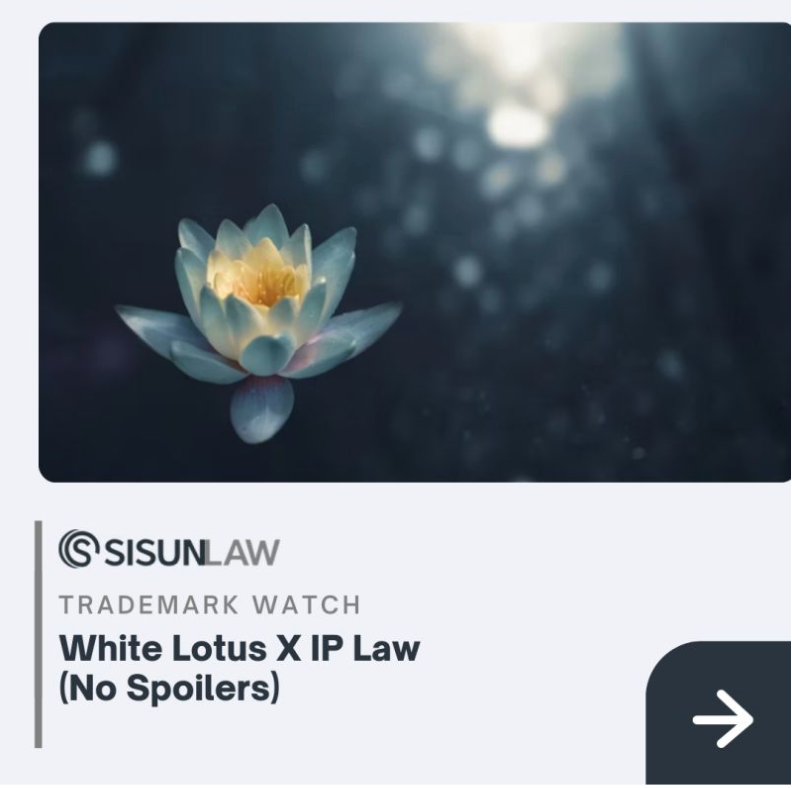The Trademark Dos and Don'ts of Naming Beauty Product Sub-Brands and Shades
- Scott Sisun
- Jan 3
- 4 min read
Updated: May 14
By: Gabriella Fernandez
Introduction
When it comes to cosmetics and nail polish, shade names and sub-brands are more than just creative descriptors—they are essential branding tools. Iconic shades like Estee Lauder’s "Ruby Woo" or L'Oréal’s "Ballet Slippers" demonstrate how a well-chosen name can become synonymous with a brand, creating emotional connections with consumers and driving sales. However, the process of naming and using these sub-brands is fraught with potential legal pitfalls, especially when it comes to trademarks.
Trademark infringement is a significant risk for beauty brands, particularly in an industry where evocative and unique naming is the norm. Overlapping or confusingly similar names can lead to disputes, damage brand reputation, and incur legal costs. To avoid these outcomes, it’s crucial to understand the trademark do’s and don'ts of naming beauty product sub-brands.
Do: Understand Descriptive Use vs. Trademark Infringement
When brainstorming shade names, it’s important to distinguish between descriptive use and trademark infringement. Descriptive terms often describe a product’s features, such as color or texture, and may be harder to protect under trademark law. For example, in Hard Candy, LLC v. Anastasia Beverly Hills, Inc., the court ruled that the use of "HARD CANDY" as a shade name was descriptive and unlikely to cause consumer confusion with the trademarked brand name.
To help avoid the potential for trademark infringement, ask whether the name serves primarily as a creative descriptor or a brand identifier. Names that lean too close to another company’s trademark risk crossing the line into infringement. Owners of the priority trademark should consider watch notices and monitoring for potential infringers.
Don’t: Overlook the Likelihood of Consumer Confusion
A core principle in trademark law is the likelihood of consumer confusion. Names that are phonetically, visually, or conceptually similar to an existing trademark can mislead consumers into believing there is a connection between brands. For example, in Sonora Cosmetics v. L’Oréal, the court found that “LES BIJOUX” (used by L’Oréal) was confusingly similar to Sonora’s trademark “BIJOU,” given their identical pronunciation and overlapping product categories.
To reduce this risk, consider distinctive names and evaluate whether the proposed name could confuse consumers based on sound, appearance, or meaning.
Do: Conduct Comprehensive Trademark Searches and/or Naming Searches
Before finalizing a name, invest in a comprehensive trademark search or naming search for proposed next steps prior to trademark use and registration. Comprehensive searches include review of:
The USPTO trademark database for registered or pending trademarks.
Search engines, directories, business names, online platforms, mobile applications and social media for unregistered names.
International trademark registries if the product will be sold globally.
Naming searches assist in choosing the primary or sub-brand name via a higher level review of USPTO databases and potentially light common law review. Comprehensive searches after a naming search can help to finalize the sub-brand of choice prior to use and registration.
A detailed search can uncover potential conflicts early, saving time and legal costs down the road.
Don’t: Overlook Relatedness of Goods/Services
Even if a name seems unique or specific to cosmetics, it may still conflict with trademarks in related industries. Trademark law considers the “relatedness” of goods and services, meaning a name used for fragrances, bags, jewelry and clothing could pose a risk for cosmetic products.
Always consider potential overlaps and ensure the name is clear across overlapping categories.
Do: Consider the Risk of Dilution
Dilution can occur when a commonly used term becomes less distinctive or “weak” due to widespread use and lack of enforcement by the brand owner. For example, names like "Rose," "Gold," or "Nude" are so ubiquitous in beauty products that they could risk reducing trademark significance. Choosing a diluted name could weaken your ability to enforce IP rights or defend against claims from objectors.
Instead, opt for distinctive, creative names that stand out in the marketplace while avoiding overused or potentially descriptive or generic terms.
Don’t: Ignore Legal Precedents
Case law can provide valuable guidance for navigating potential trademark disputes. By studying decisions like Hard Candy v. Anastasia and Sonora v. L’Oréal (see sources, below), you can identify patterns in how courts interpret consumer confusion, descriptive use, and relatedness. This knowledge can inform your naming process and help you avoid common pitfalls.
Do: Involve Legal Experts Early
Trademark lawyers and intellectual property professionals are essential allies in the naming process. They can:
Conduct trademark searches and clearances.
Assess risks and provide guidance on potential conflicts.
Handle trademark applications and registrations to protect your chosen names.
Assist in international clearance and registration.
Help enforce rights to avoid widespread unauthorized use.
Engaging legal expertise early ensures a smoother path to launch and minimizes the risk of costly disputes.
Conclusion
Naming beauty product sub-brands and shades is a creative process with significant legal implications. Understanding descriptive use, assessing consumer confusion, conducting thorough searches, and involving legal experts can help to develop compelling names that resonate with consumers while avoiding infringement risks. In the competitive beauty industry, a thoughtful approach to sub-brand and shade naming is essential for protecting your brand’s reputation and long-term success.
Sources:
Sonora Cosmetics, Inc. v. L'Oreal S.A., 631 F. Supp. 626 (S.D.N.Y. 1986)
Hard Candy, LLC v. Anastasia Beverly Hills, Inc., 921 F.3d 1343 (11th Cir. 2019)
Nabisco, Inc. v. Warner-Lambert Co., 220 F.3d 43 (2d Cir. 2000)


Comments